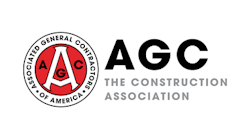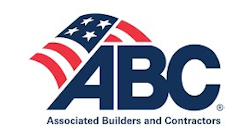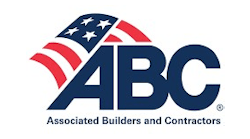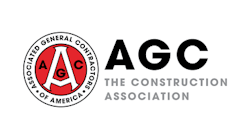The term “cross-cultural workplace” has recently taken on an ominous meaning due to a 24% increase in Latino workplace deaths since 2001. The Occupational Safety & Health Administration (OSHA) created a special program to ensure that the number of Latino fatalities decreases. The need to achieve and maintain a safe working environment for your workers is a natural priority, but now inspectors are out in the field enforcing OSHA compliance and preparing to levy stiff fines for nonconformity, especially regarding the Latino worker. Furthermore, how safely a company performs is becoming a factor for obtaining business as your workers’ compensation experience modifier becomes more frequently used as a criteria to award work to your safer competitor. Lastly, in a tight economic environment, the decrease in the workers’ comp cost per employee is astonishing when experience mods are consistently under 0.7 or 0.8. But this potential savings can only be realized when a company is able to positively influence the cross-cultural work force’s attitudes and behaviors concerning safety. Zerah Services’s experience with cross-cultural companies has revealed that they are usually hindered by a significant lack of insight concerning:
- how to effectively get the safety message out to the employees,
- a meaningful way to measure both effective safety and work behaviors,
- how to find and deliver training that changes safety behaviors in the workplace, and
- how to determine the payback for training investments.
So what does it take to become the “lead sled dog” in safety? The first step is to understand why the cross-cultural work force is inevitable and how a company takes advantage of those changes.
The Labor Pool Is Changing
Clearly the driving force behind the large change in work-force ethnicity that has already started can be summed up in two words: Baby Boomers. As these aging workers leave the work force, there just aren’t enough English-speaking replacements. This is especially true in the construction industry. In 1997, the United States Census Bureau produced census data predicting the effects of the retiring Baby Boomers. Figure 1 illustrates the predicted cumulative worker shortage by 2010.
The graph shows that there are three factors acting together to make the dramatic shift to a significant non-English component of the work force unavoidable:
- older workers retiring who are 55-59 years of age (the green line),
- new workers available to replace retiring workers who are 18-24 years old (the black line), and
- the number of workers needed to replace the retiring workers, plus those incremental workers required as a result of the general growth of the workplace (the red line).
Over time, the summary of these factors’ effects on each other suggests that by 2010 there will be a shortage of 3.88 million workers, which will present a daunting challenge for business owners trying to replace their retiring workers with people of the same level of experience and skill. This is especially true in the construction industry.
Why? Today’s US education system is emphasizing the acquisition of complex technical skill sets, enabling English-speaking graduates to seek and find higher-paying jobs, which will keep the younger workers out of the lower-paying labor ranks.
Latinos and other immigrants will undoubtedly fill this gap of unskilled labor. This is because the majority of Latino immigrants entering our work force will have, on average, a sixth-grade education and virtually no skill sets. High rates of illiteracy also make training immigrant Latinos more difficult and less effective. Furthermore, these factors in combination have probably contributed to unsafe working conditions and the resulting increase in Latino fatalities in the construction industry.
The Replacement Workers
So where will the extra workers come from to fill the nearly 4 million—worker gap? The US Census Bureau’s population growth by ethnic groups to 2050 is shown in Figure 2. Beginning with the year 1995, the makeup of the overall mixture of all ethnic groups will undergo continual, significant growth, which hints at how the work force will appear toward 2050.
Clearly the Latino ethnic population trend will have the most significant impact on the US population–and the construction industry–when considering the following reasons:
- By 2003, Latinos will have become the predominant minority.
- By 2050, nearly 80 million Latinos will live in the US.
- By 2050, Latinos will constitute nearly 22.5% of the US population.
- By 2100, Latinos will constitute 38.2% of the US population.
- By 2100, the declining number of Caucasians will become a minority, making up only 48.2% of the population.
- By 2010, there will be nearly 45 million Latinos in the US.
Also important is that many Americans do not know some of Mexico’s vital statistics. The driving force behind the Latino migration is easy to understand because Mexico:
- is slightly less than three times the size of Texas;
- in 2001 had a population of 101 million (just under half of the US population);
- in 2001 had an emigration rate of nearly three people per 1,000;
- has only 12% of its land classified as arable;
- has only 1% of its land-producing permanent crops;
- employs 20% of the population in agriculture, 24% in industry, and 56% in services;
- has the top fifth of the population controlling more than half the wealth; and
- has the impoverished lower fifth controlling only 4.5% of the wealth.
Considering Latin America in total, 40% of Latin America’s 470 million people exist in poverty (earning $730/yr.) and 25% of the 470 million people exist in extreme poverty (earning just $365/yr.).
The seemingly hopeless poverty in Mexico and Latin America has now made the exodus to the US an essential fact of their lives. Documented and undocumented Latinos will risk their lives to be clandestinely transported into this country because of the unbelievable wealth available in the US. Wages in the construction industry promise a way to escape this poverty. The Bureau of Labor Statistics has provided compensation data for 2001 in the construction industry and shows that:
- the average number of hours worked per week is 39.2,
- the average hourly wage is $18.33,
- the average weekly earnings is $718.54, and
- the annual earnings for an employee can be a little more than $37,000 or about 50 times above the Mexican poverty line of $730/yr.
These earnings are crucial, as portions of their wages are shared with their families in Mexico to help relieve the poverty. As immigration to US becomes more attractive, younger Latinos will immigrate to the US. The high school dropout rate will continue to rise in Mexico, thus increasing the illiteracy rate even more. The growth of the Latino sector in the US is inevitable.
Planning for Cross-Culturality
While many people use the term “cross-cultural,” not everyone understands how it impacts business. The term simply describes a shift from a large percentage of English-speaking workers to a quickly growing percentage of non-English speakers. Knowing that a cross-cultural work force is not a new concept for construction, what is the single most important reason for the integration of a cross-cultural work force to any construction business owner? The answer is plain and simple: survival.
In our opinion, company owners will undoubtedly experience unacceptable performance results if they:
- accept the status quo and assume it will last;
- continue to believe that “if it ain’t broke, don’t fix it”; and
- fail to incorporate their cross-cultural work force’s strengths into future business plans and strategies.
Those owners who deliberately decide to design their business plans and strategies to incorporate the changes necessary to take advantage of their cross-cultural work force’s strengths will transform their company to a leading-edge, cross-cultural business that will achieve the much-sought-after “lead sled dog” reputation in both safety and work performance. So planning must include prioritizing safety as the number-one strategic goal and include the cross-cultural worker in this goal.
The vital importance of strategic planning cannot be overemphasized. General George S. Patton Jr., definitely a world-class lead sled dog, probably said it best: “Success in high command is making plans that fit the circumstances.” He continued by stating, “Failure in high command was caused by trying to make circumstances fit the plans.” (Italics are author’s emphasis.) A company’s plans and strategies need to consider the coming shortages and shifts in the general ethnic population while adjusting to the changes that are already occurring. By looking at how a typical cross-cultural company is structured today, the coming trends become even more evident.
First, take a look at the kind of people who make up your own company, then look at the jobs they hold and how many are in each job. You probably have a majority of English-speaking (Anglo) managers and a majority of non-English—speaking (Latino) workers. We have compiled data suggesting a typical composition of employees in a cross-cultural construction firm.
The typical company’s cross-cultural composition and its effects on both management and worker relations are not surprising because there are general issues present in virtually every job category, including:
- language;
- management effectiveness;
- cultural issues such as work ethic, values and norms, teamwork;
- attitudes about performance; and
- perceptions of discrimination.
The reasons for these issues is best explained by Table 1, which subdivides the pie chart and shows the composition of each major grouping (e.g., Management, Labor, and Miscellaneous).
Figure 3 and Table 1 both combine to point out some of the strongest issues confronting the cross-cultural company’s management team:
- Number of people managed by a manager (span of management)
- Bilinguality
- Skewed ethnic management representation
- Cross-cultural issues
This typical cross-cultural company has a relatively common mix of employees, where 77% of the workers are managed by 23% of the company’s managers. Zerah’s experience shows that the span of management issues come from two areas: (1) poor training of unqualified workers and (2) generally mediocre management or lack of effective management/supervisory skills.
The construction industry has seen a decrease in the number of employees a foreman can manage. Five or 10 years ago, a foreman could productively manage 12-15 employees. Currently that number is five or fewer. This deterioration has come about as a result of:
- the loss of experienced, semiskilled Latinos who leave the work force through promotion or attrition after gaining good solid skill sets;
- low skill levels of new untrained workers;
- the loss of skilled, experienced managers at all levels; and
- the difficulty of cultivating good skill sets due to illiteracy and language issues.
The data show that the ratio of workers to foremen is 1:5. This ratio suggests that foremen have to compensate for lost skill sets required to ensure that the job is getting done. Lastly, workers who are usually identified as potential foremen are not identified for their leadership or communications skills but usually are promoted because of:
- longevity/seniority,
- an effort to retain the skill set in the company,
- superior working skills,
- getting the job done quickly and well,
- lack of conflict with the foremen, and
- the general feeling that the individual needs to be promoted.
Often this promotion leaves a skills gap in the crew that requires additional time from the foreman–up to 12%, according to our figures–to educate the “new guy.” In addition, the new foreman is promoted from a skilled-labor job where he was productive to a management position where he does not have the skill set to manage. The only management training will probably be on-the-job and lead to his frustration and stress, which will likely increase job dissatisfaction and reduce performance for the new manager and his crew.
Even more remarkable is the span of management ratio of foremen to superintendents, which is almost 2:1. This very small ratio indicates that the superintendents are spending a significant amount of time with their direct reports. This ratio also denotes a high degree of monitoring the foremen (including the new foreman promotee described above) in order to get the job done.
The general manager is supervising eight superintendents, one of whom, on average, is Latino. So many superintendents reporting to only one general manager can create the following problems:
- It leads to poor communications.
- There is a strong tendency to “Ask forgiveness and not permission” on the part of the superintendents when independently executing tasks.
- Often there is a sense of isolation among the superintendents.
- There is intense competition for the general manager’s time, which limits his effectiveness.
The next issue is the bilinguality of the typical cross-cultural company. The fact that 23% of the company is engaged in managing the other 77% is not atypical. Table 1, however, shows that 16% of Anglos are managers and only 7% of Latinos are managers. The workers, though, have a ratio of Anglo-to-Latino of 15%-to-55%. Obviously the foremen, whether Anglo or Latino, will have an average of at least four non-English speakers on their crews. An Anglo foreman will probably have problems trying to get the majority of his Latino crew moving in the same direction. As described later in this article, survey results and data analysis by Zerah show that the Latino concept of teamwork is significantly different than the Anglo concept.
Bilinguality issues are often what Zerah tries to solve for its clients. The need is often framed by a minority management seeking a way to get all of the Latinos to learn English. Clearly there are numerous reasons that underlie this need:
- To upper-level management it’s a very simple solution.
- It aids the company in maintaining clear communications.
- It imposes the “language of the land” on the immigrant Latinos.
- It doesn’t require the Anglos to invest time in doing something that they feel the immigrants should do anyway.
However, our findings from surveys suggest that it would be far easier for the Anglos to become bilingual because:
- it would be less expensive to train 16% of Anglos and 7% of Latinos comprising company management in “Spanglish” (a blend of everyday Spanish and English) than to train 59% of the company’s Latino workers and journeymen,
- it would be easier to manage and measure the success of the training,
- the people targeted for the training would have the education and study skills to learn Spanglish,
- it would help ease the load on the management staff in terms of their communications issues, and
- it would favorably impress the majority of the company’s Latinos.
The last point addresses cross-culturality issues, and the only way to best explain these issues is to define cross-culturality.
Defining the Cross-Cultural Work Force
What is a cross-cultural work force? There are as many definitions of “culture” floating around as there are consultants and educators to offer them. Zerah chooses to employ the following definitions of culture that cut to the heart of understanding cross-culturality. The two types of culture that are important are ethnic and organizational.
Ethnic culture is what someone must know and do to live successfully in his or her community. This ethnic knowledge includes such things as language, family, values, norms, moral precepts, history, and other aspects that are taught by community members and family from infancy on that direct behaviors and form attitudes. Organizational culture is very similar in that it is what someone must know and do to be successful within the organization. Organizational culture is made up of specialized language, group values and norms, distinct morals, legends that embellish the organization’s history, and other aspects that are taught by coworkers and management from the first day of work in order to guide work behavior and permit management of workers according to acceptable standards.
With this in mind, how can a company define itself as having a cross-cultural work force? When people go to work, they don’t leave their ethnic culture at the door of their workplaces. They usually bring a collection of ethnic attitudes and behaviors that can be integrated with similar aspects of the organizational culture. The extent of ethnic/organizational culture integration is critically important because, when an ethnic majority (90% or more) comprises an employee base, usually the organization’s culture is highly integrated with the majority ethnic culture and there is not a cross-cultural mismatch or tension.
Conversely, when there are two or more distinctive ethnic groups working at a company and no group comprises more than 60-70% of the employee base, the organization’s culture and the ethnic cultures are generally not well integrated and a valid cross-cultural situation exists. The perceived level of conflict as a result of cross-culturality is aggravated when two distinct languages are involved. Although there are exceptions to this definition of cross-culturality with respect to organizational/ethnic cultural integration, they are few and far between.
A hybrid of organizational and ethnic culture is a safety culture. It is what everyone must know and do to create, maintain, and improve an absolutely safe workplace saturated in excellence. In an excellent, successful safety culture:
- there is irrefutable, companywide, top-to-bottom, honest support for absolute excellence in safety performance;
- excellent safety performance is defined in terms of observable safety behaviors;
- excellent safety performance is defined in terms of decreased workers’ comp experience mods;
- excellent safe work practices are owned, shared, and taught by everyone;
- everyone has voice when it comes to safety excellence; and
- safety excellence is a corporate imperative incorporating ethnic strengths to ensure safety.
Cross-Culturality and the Keys to the Kingdom
Now that you know how cross-culturality will impact your company now and in the future, the keys to the kingdom go to the company that can take the most productive aspects of both ethnic cultures, braid them with their organizational culture, and then create a safety culture steeped in excellence. Any company owner who is able to implement this critically important cultural change through planning and strategy will become a lead sled dog by virtue of having created a world-leading, best-in-class safety culture. Best-practices companies can achieve lowered costs, increased revenues, fewer redos, increased profitability, and the lowest employee turnover rate in the industry.
This cultural shift, however, is not by any means an overnight proposition. It requires thoughtful planning and smooth execution; an onboarding of all levels of employees through training, discussions, and honest give and take. But this kind of change must absolutely be supported at the owner and executive levels and passed down to all managers and workers. However, because of upper-level management’s bias toward a long history of managing one way, often only lip service is paid to the change.
What Does It Take to Become the Lead Sled Dog in Safety?
To begin the process of shifting to a safety culture, Zerah’s research supports the following principles as foundations on which to build:
- With people of all levels, “Involvement Breeds Commitment”: People want to captain their own ship.
- Behaviors can be trained and encouraged.
- Behaviors can be observed and, as a result, measured.
- People want to be successful and will offer behaviors to ensure success.
- Coworkers care about and respect each other.
- Attitudes can be measured by asking people to offer an opinion on a certain topic.
- Attitudes cannot be observed: A person can mask his or her attitude about something.
- Superficial, short-term training has only marginal long-term effects on attitudes.
- Attitudes permit the person to judge whether or not the required behavior is justified.
- A team is only as good as its most independent member.
With these principles as basic beliefs, the most important step is to clarify the attitudes of your company’s employees based on their opinions by administering a scientifically derived survey. The survey must use employee opinions to measure the strengths or weaknesses of specific organizational factors called variables. These variables act together to influence the overall safety behavior and performance of your cross-cultural work force.
Often we hear from safety directors, safety management, or operations that they have already done a survey, that everything is peachy, and that their companies don’t need our services. Most of the time, when we get this kind of door-in-your-face response, it indicates that the survey techniques are suspect. Our experience with homegrown surveys is that they often:
- are designed by managers who have the end result in mind when making up the survey questions;
- are given to determine job satisfaction;
- favor the English speakers and are not read to the illiterate Latinos;
- are self-serving because the questions are asked in a way that leaves little to the imagination on how to respond;
- provide little confidentiality for the survey takers who often respond as though the wrong answers will result in reprisals;
- use poor analysis techniques, which yield misleading conclusions;
- are not done on a regular basis to determine trends;
- use the results to define hot spots for micromanagement; and
- are not used in the planning or strategy cycle but often simply satisfy a requirement.
So is there a survey that a company can use? Zerah uses a survey developed as a result of eight years of research. Each question has been answered by at least 2,000 people, which statistically ensures that the questions:
- thoroughly explore and accurately measures an attitude by reframing it as an opinion of the survey taker;
- yield accurate, conclusive results;
- are validated so they are legally defensible in court; and
- provide solid objective information providing a sound basis for practical change.
Studies have shown that safety attitudes and behaviors are driven by worker opinions about both the organization and its safety program(s). Zerah uses a 60-question survey, produced in both English and Spanish, that examines 13 cross-cultural organizational topics and eight related safety topics. When fully analyzed and interpreted, these surveys reveal where there is common ground between the cultures and where there are mismatches. The surveys are:
- administered on an particular job site helping to put the survey takers at ease;
- totally anonymous, asking only for job category and division;
- developed to seek survey takers’ opinions measured on a 1-to-5 scale;
- developed and administered to encourage honest answers because Zerah controls the completed surveys; and
- designed to be administered quickly: Anglos finishing the surveys in 10-15 minutes, illiterate Latinos who have the survey read to them finishing in 25-30 minutes.
Once the data from the surveys are collected and entered into a statistical computer application, they become a database that is not only used to analyze your company but is also anonymously added to our industrial database. The job category and division are also coded and entered into the database. At that point, the completed database is analyzed and the results are interpreted using graphs.
Zerah uses a process system that has identified phases and benchmarks that guide the organizational changes necessary to transition to a safety culture. Our organizational change process system is referred to as the Cross-Cultural Performance Improvement System (XC Perf-I System). Figure 4 is a part of that system and is a snapshot of how Zerah uses the data to begin assessing cross-cultural influences. Using data from an anonymous client, this initial graph compares the Anglo and Latino opinions of eight safety categories. Averages of the Anglo and Latino responses appear side by side for the eight safety variables.
To begin the basic assessment, we look at four things:
- Variable mismatches
- Variable matches
- Positive variable responses above the midline (4.02)
- Negative variable responses below the midline (4.02)
In analyzing data, the devil is in the details. Looking at the details, the following is revealed:
- The Anglo/Latino opinion mismatches are Safety Communications, Safety Training and Development, Safety Task Proficiency, and Safety Organizational Climate.
- The Anglo/Latino opinion matches are in Safety Goal Motivation, Accountability for Safety, Safety Participative Decision-Making, and Supervisor Support of Safety.
- The most positive opinion (shared by both groups) is Safety Goal Motivation.
- The most negative opinion is the Anglo response for Safety Organizational Climate.
- The most negative Latino response is Safety Communications.
A distinctive pattern emerges. When the interaction of the very negative Latino opinion of Safety Communications, followed by the negative opinion of Supervisor Support for Safety, and finally the negative opinion of Safety Training and Development are placed into an organizational context, the following scenario emerges:
- The Latinos are not getting safety communicated to them (probably a language issue).
- The supervisor who is probably delivering the safety message can’t be supportive because he is unable to determine the effect of the message.
- The negative opinion of Safety Training and Development hints at ineffective training practices.
Is it any wonder that there has been an increase of 24% in Latino fatalities this past year? See for yourself what things you can come up with using this chart. In the next article in a future issue, we will amaze you with what we found and what our client is going to do to become a lead sled dog.
Each of our figures tells a story of a company and how it works: its shortcomings, its strengths, and what things must be done to bring all of the opinions–both Anglo and Latino–above the line and which group, Anglo or Latino, can help the other to achieve lead sled dog status. Above all, it’s the people in your company who are going to make this transition successful, and it can only be done by understanding them, their attitudes, their behaviors, their willingness to change, and what strengths they can use.
In the last half of the article we will discuss in more detail how we interpret your company’s data to provide you meaningful information.







